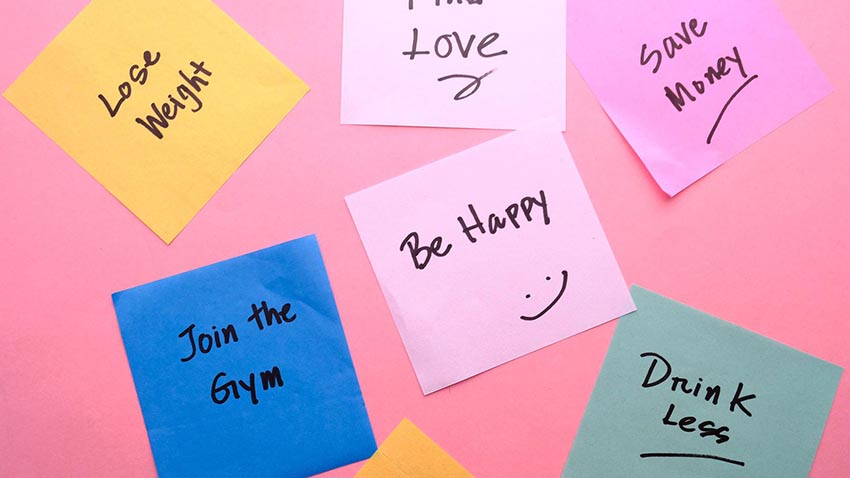5 Keys to Help You Stick to Your New Year's Resolutions
Reach your goals all year round with these tips

Photo Credit : CNet
New Year's resolutions are here. Yet every year, it seems like people who make resolutions give up on them shortly after. In fact, most people throw in the towel by February, about six weeks into the New Year. One statistic claims that only a mere 8 percent of the population fulfills their New Year's resolutions successfully.
Why do so few stick to their resolutions? The answers are rarely black and white, but research can tell us what actually works and what is myth.
1. Get closure on past failures.
It may be a struggle to push on when there is a track record of failure. Years of failing to achieve New Year's resolutions can seem like evidence that success will never happen. However, it can also be a lesson on what went wrong.
The reason for failure may be as simple as not setting a timeline and measuring progress. Look at the past to identify where resolutions faltered and why. Then, accept there's nothing that can be done about previous years, but identifying missteps can help prevent them from happening again.
2. Have clear measurable results and structure.
If your New Year's resolution is to save money, be specific. How much money do you want to save and what's your plan for doing it? Set an amount.
If you want to save $10,000 by the end of the year, create a clear plan in writing that outlines how much you need to save from your paycheck every month. There are even apps like Mint or Acorns that will automatically transfer money to savings for you.
3. Find your community.
Trying to reach any goal on your own is near impossible, not to mention lonely. One of the best ways to stick to a goal is to surround yourself with people that will help you push through.
If you want to go to the gym, join a group exercise. Researchers found that those who participate in group exercises lowered stress by 26 percent and saw significant improvement in their quality of life. In comparison, their solo counterparts saw little improvement for either.
Another study from MIT found that exercise can be socially contagious. If you have a friend who runs 10 minutes more, it can motivate you to run at least three minutes more.
The key is to find the people who are fit all year round, not the ones that just work out in January. This is also true for finances, health, mental happiness, or any other goal you are working toward.
4. Make it enjoyable.
If you dread going to the gym, chances are that you are going to give up on it quickly. However, there are some techniques that can make it more enjoyable.
For instance, Eyal cites a principle called Minimum Enjoyable Action, or MEA. When you build new habits, start small and build your way up.
Instead of trying to run five miles your first day at the gym, try running short sprints for a mile with walking breaks in between. If you hate running, then incorporate something you do like instead. You can play basketball or swim; you are still exercising.
5. Make it a habit.
The key to and most difficult part about successful resolutions is to turn them into habits that you'll stick to even when the year is over.
Dan Ariely led a study to understand what would motivate workers in Kenya to save money. Participants, or savers, in the experiment would receive texts from their children on a weekly basis, reminding them to save money.
Although reminders helped, the most effective tool to get people to save regularly was a simple scratch-off card in the shape of a gold coin. On the card, they were tick marks that savers scratched off each time they saved money. This physical object became part of their identity as a money saver and helped them form a regular routine.
Forming new, healthy habits is hard. It won't just happen because a new year is here, and you've made a resolution. You may have to set measurable goals with deadlines, start small and build up progress, and surround yourself with people that push you to succeed.
This article originally appeared on : Inc.
-

Moldovan youth is more than ready to join the EU
2024-04-18 -

UN says solutions exist to rapidly ease debt burden of poor nations
2024-04-18 -

'Human-induced' climate change behind deadly Sahel heatwave: study
2024-04-18 -

Climate impacts set to cut 2050 global GDP by nearly a fifth
2024-04-18 -

US sterilizations spiked after national right to abortion overturned: study
2024-04-13 -

Future of Africa's flamingos threatened by rising lakes: study
2024-04-13 -

Corporate climate pledge weakened by carbon offsets move
2024-04-11 -

Humanity lost 'moral compass' on Gaza: top UN official
2024-04-10 -

No.1 Scheffler says patience and trust are secrets to success
2024-04-10 -

From homeless addict to city chief: the unusual journey of Canadian mayor
2024-04-10
